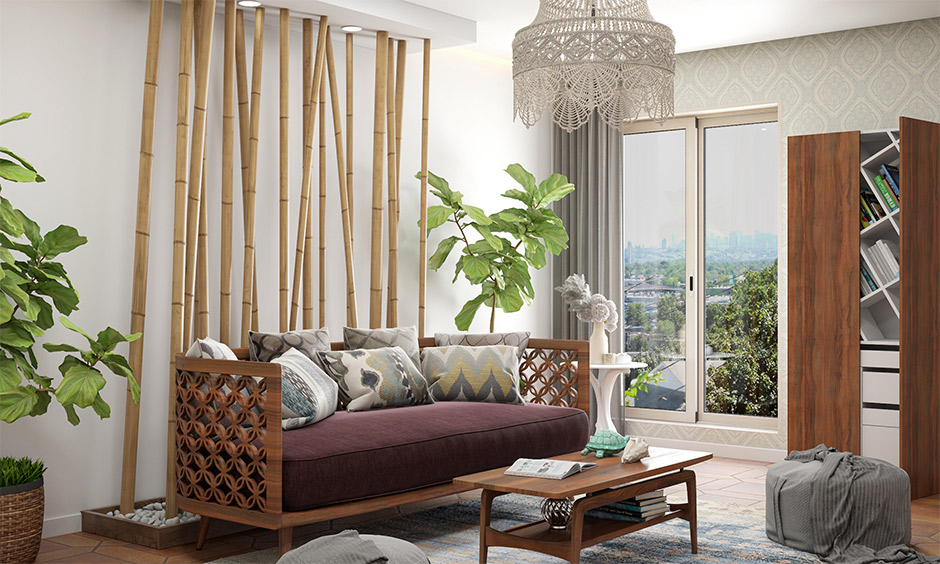Top 10 Sustainable Building Materials for Eco-Friendly Interiors

Sustainability is crucial for the health of our planet and future generations. By living sustainably, we can reduce our carbon footprint, conserve natural resources, and protect the environment. It involves using renewable resources, reducing waste, and adopting eco-friendly practices in our daily lives. Sustainable living is not only good for the environment but also promotes a healthier lifestyle and saves money in the long run.
Sustainable building materials are becoming increasingly important in interior design. Sustainability is crucial in interior design as it promotes mindful use of resources, reduces waste, and supports the health of the environment. Incorporating sustainable practices such as using eco-friendly materials, energy-efficient lighting, and recycled decor can create a beautiful space that is also environmentally responsible.
Homeowners, DIY enthusiasts, and construction industry professionals are recognizing the importance of making eco-friendly choices when it comes to building materials. With a variety of interior sustainable materials available on the market, it’s now easier than ever to create beautiful and environmentally-friendly interiors. In this article, we’ll be exploring 10 sustainable building materials for eco-friendly interiors, as well as the importance of material choice in interior design. We’ll also provide additional considerations for creating an eco-friendly space and answer some frequently asked questions about best materials for interior design.
List of 10 Sustainable Building Materials for Eco-Friendly Interiors
Bamboo
Bamboo is a highly sustainable material due to its rapid growth rate and ability to regenerate quickly. It can be used for flooring, wall paneling, and furniture. Bamboo flooring is becoming increasingly popular as an eco-friendly alternative to traditional hardwood floors.
Cork
Cork is a renewable and recyclable material that can be harvested from the bark of cork oak trees without harming them. It’s a great option for flooring, as it’s comfortable underfoot and provides insulation.
Reclaimed wood
Reclaimed wood is salvaged from old buildings, bridges, and other structures, and repurposed for use in new construction projects. It’s a great option for flooring, wall paneling, and furniture, and adds a unique character to any space. It is one of the most popular Eco-friendly interior design materials.
Recycled glass
Recycled glass can be used for countertops, flooring, and wall tiles. It’s made from post-consumer glass, which is melted down and formed into new products. It’s a great way to divert waste from landfills and create a beautiful, sustainable product.
Natural stone
Natural stone, such as granite or marble, is a sustainable material that can be used for countertops, flooring, and wall tiles. It’s durable, long-lasting, and adds a touch of elegance to any space.
Wool carpeting
Wool is a renewable material that’s comfortable underfoot and provides insulation. It’s a great option for carpeting, as it’s durable and easy to clean.
Linoleum flooring
Linoleum is a natural flooring material made from linseed oil, wood flour, and other natural materials. It’s durable, long-lasting, and available in a variety of colors and patterns.
Low-VOC paint
Low-VOC (volatile organic compound) paint is a sustainable option for interior painting. It releases fewer harmful chemicals into the air, making it a healthier choice for you and the environment.
Gypsum board
Gypsum board, also known as drywall, is a sustainable building material that’s made from gypsum, a naturally occurring mineral. It’s durable, fire-resistant, and can be recycled.
Soy-based insulation
Soy-based insulation is a sustainable alternative to traditional insulation materials, such as fiberglass. It’s made from soybean oil and recycled paper and is effective at insulating and reducing energy costs.
Benefits of Using Sustainable Interior Design Materials in Construction
Using sustainable building materials in interior design has many benefits, both for the environment and for human health. Some of these benefits include:
Positive impacts on the environment
Sustainable building materials help reduce the impact of construction on the environment. They can be made from renewable resources, recycled materials, or salvaged from old buildings. Using sustainable materials can help reduce waste, conserve natural resources, and reduce greenhouse gas emissions.
Positive impacts on human health
Sustainable building materials can help improve indoor air quality, which is important for human health. They release fewer harmful chemicals and pollutants into the air, reducing the risk of respiratory problems, allergies, and other health issues. They can also be designed to reduce noise pollution, which can have a positive impact on mental health.
Positive impacts on the local economy
Using sustainable building materials can have a positive impact on the local economy. Many sustainable materials are sourced locally, supporting local businesses and reducing transportation emissions. Additionally, using sustainable materials can create demand for new, green jobs in the construction industry.
Importance of Material Choice in Interior Design
The material choice in interior design is crucial, as it can have a significant impact on health, well-being, and the environment. Choosing sustainable building materials for interiors is a responsible choice that can help create a healthy, beautiful, and environmentally-friendly space.
Impacts on health and well-being
Indoor air quality can have a significant impact on human health and well-being. Using sustainable materials that release fewer harmful chemicals and pollutants into the air can help create a healthier space. Additionally, materials that are designed to reduce noise pollution can have a positive impact on mental health.
Impacts on the environment
The construction industry is responsible for a significant amount of greenhouse gas emissions and waste. Choosing sustainable building materials for interiors can help reduce the environmental impact of construction, by conserving natural resources, reducing waste, and reducing greenhouse gas emissions.
Impacts on the local economy
Choosing sustainable building materials that are sourced locally can help support local businesses and create demand for green jobs in the construction industry. Additionally, using sustainable materials can help reduce transportation emissions, as materials are sourced closer to the construction site.
Additional Considerations for Eco-Friendly Interiors
In addition to using sustainable building materials, there are other considerations for creating an eco-friendly interior. These include:
Energy-efficient lighting
Using energy-efficient lighting, such as LED bulbs, can help reduce energy consumption and costs.
Proper ventilation
Proper ventilation is important for maintaining good indoor air quality. Ventilation systems should be designed to provide fresh air and remove pollutants from the air.
Indoor plants
Indoor plants can help improve indoor air quality by removing pollutants from the air.
Upcycling and repurposing
Upcycling and repurposing furniture and decor items can help reduce waste and create a unique, eco-friendly space.
Conclusion
In conclusion, using sustainable interior design materials is important for creating healthy, beautiful, and environmentally-friendly spaces. The list of 10 sustainable building materials provided in this article is just a starting point for making eco-friendly choices in interior design. By choosing sustainable materials, we can reduce our impact on the environment, improve indoor air quality, and support local businesses and green jobs in the construction industry.
FAQs
Which material is used in interior design?
A variety of materials can be used in interior design, including wood, metal, glass, stone, and fabric.
Why is material necessary in interior design?
Material is necessary in interior design to create functional, comfortable, and aesthetically pleasing spaces.
What are the 7 principles of interior design?
The 7 principles of interior design are unity, balance, rhythm, emphasis, contrast, scale, and proportion.
What are the 7 layers of interior design?
The 7 layers of interior design are flooring, lighting, walls, furniture, accessories, color, and texture.
What are the 7 elements of interior design?
The 7 elements of interior design are space, line, form, light, color, texture, and pattern.
What are the 5 concepts of interior design?
The 5 concepts of interior design are function, mood, harmony, contrast, and color.




